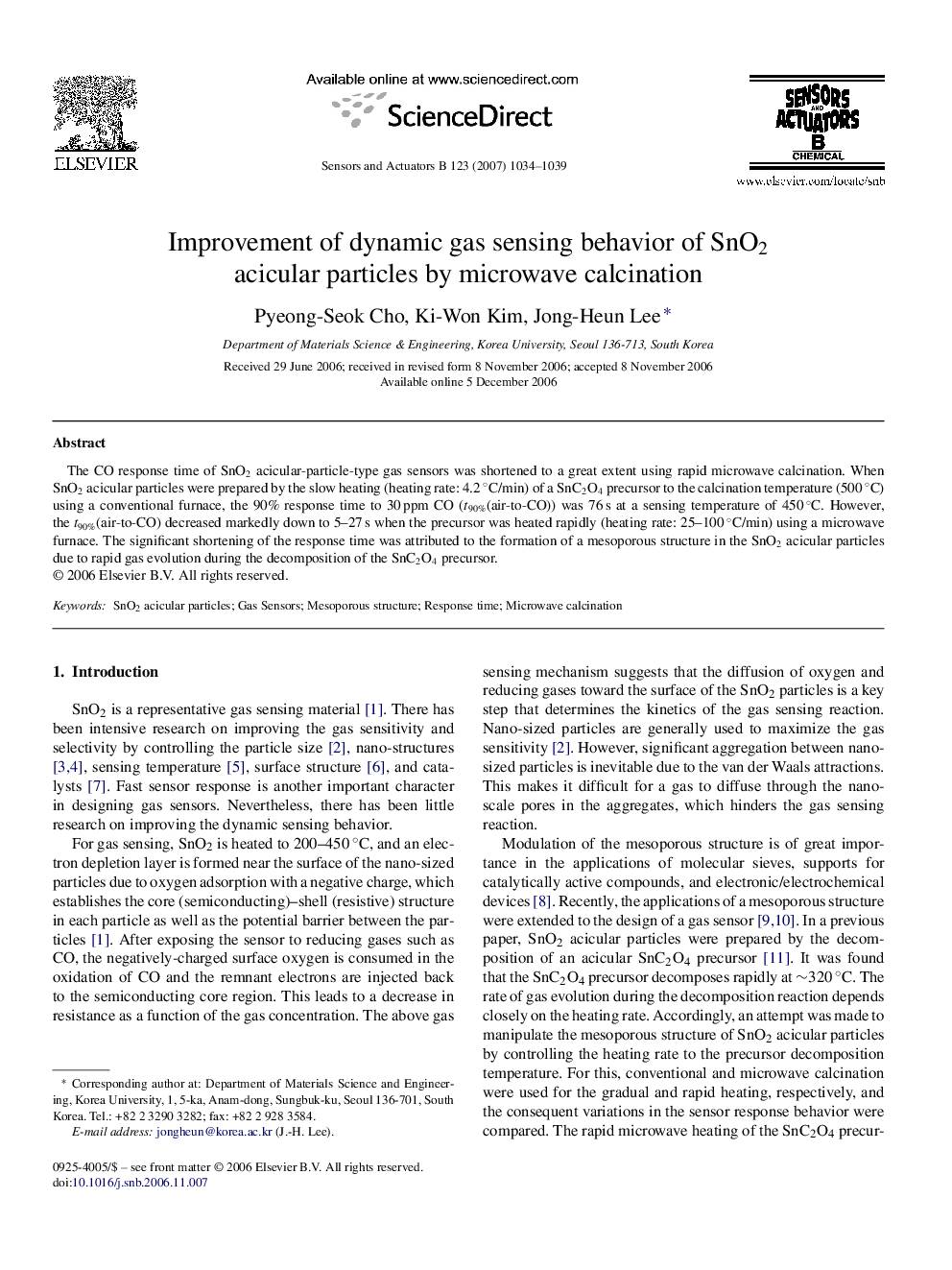| Article ID | Journal | Published Year | Pages | File Type |
|---|---|---|---|---|
| 745904 | Sensors and Actuators B: Chemical | 2007 | 6 Pages |
The CO response time of SnO2 acicular-particle-type gas sensors was shortened to a great extent using rapid microwave calcination. When SnO2 acicular particles were prepared by the slow heating (heating rate: 4.2 °C/min) of a SnC2O4 precursor to the calcination temperature (500 °C) using a conventional furnace, the 90% response time to 30 ppm CO (t90%(air-to-CO)) was 76 s at a sensing temperature of 450 °C. However, the t90%(air-to-CO) decreased markedly down to 5–27 s when the precursor was heated rapidly (heating rate: 25–100 °C/min) using a microwave furnace. The significant shortening of the response time was attributed to the formation of a mesoporous structure in the SnO2 acicular particles due to rapid gas evolution during the decomposition of the SnC2O4 precursor.
